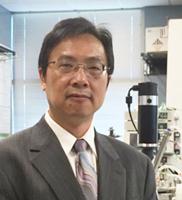


Dr. Jianfeng Xu has been a faculty member at Arkansas State University since 2008. Prior to his current position, he was a Research Scientist at Cornell University (2006-2008), a Research Scientist/Postdoctoral Fellow at Ohio University (1998-2006), and a Postdoctoral Fellow at Institute of Process Engineering (Beijing), Chinese Academy of Sciences (1997-1998). Dr. Xu got PhD of Biochemical Engineering from Dalian University of Technology (China) in 1997. He has published more than 65 papers in peer reviewed journals and 7 book chapters. He received 3 U.S. patents and 2 European patents. His current research is focused on plant cell and tissue culture for the production of therapeutic proteins, and plant biomass processing for the production of biofuels and other biobased products. His research projects have been funded by USDA, NSF and NIH.
Speech Title: Engineering the plant cell wall with novel "designer" glycopeptides as a molecular carrier for cell wall-modifying enzymes
Abstract
Reconstructing the chemical and structural characteristics of the plant cell wall with cell wall-modifying (CWM) enzymes (e.g., endoglucanase, xylanase and expansin), represents a promising solution to reduce the overall cost of plant biomass processing for production of biofuels and/or other biobased products. However, many in planta-expressed CWM enzymes targeted for extracellular secretion are mainly retained inside the cytoplasm membrane instead of being deposited into the cell wall matrix. This project aims to leverage an innovative strategy unique to plants − hydroxyproline (Hyp)-O-glycosylation − for de novo design and engineering of Hyp-O-glycosylated peptides (HypGPs) that can function as a molecular carrier in facilitating the heterologous CWM enzymes deposition and stabilization in the cell wall matrix. Different designs of synthetic HypGP modules, including an extensin-based repetitive “Ser-Pro-Pro-Pro-Pro” motif, and those comprised of arabinogalactan proteins (AGPs)-based repetitive “Ser-Pro”, “Ala-Pro” and “Thr-Pro” motifs, were each engineered into tobacco plants as fusion with a reporter protein (GFP) to characterize their glycosylation and molecular carrier function, and to assess the phenotypic change of transgenic plants. While the engineered extensin module was constitutively Hyp-O-glycosylated but with a rate-limiting glycosylation process, the glycosylation of the AGP-based modules was spatially and temporally regulated. To establish a proof of concept of the HypGP engineering utilized for plant cell wall reconstruction, a thermostable CWD enzyme, E1 endoglucanase from Acidothermus cellulolyticus was engineered into tobacco plants with/without a HypGP tag. The engineered HypGP improved the enzyme accumulation in planta and increased the biomass saccharification efficiency by 3.2-fold (compared with the wild type plant) without significantly affecting the biomass accumulation yields. This technology is being applied to engineer the plant cell wall of dedicated bioenergy crops such as switchgrass and miscanthus for improved biomass processability.